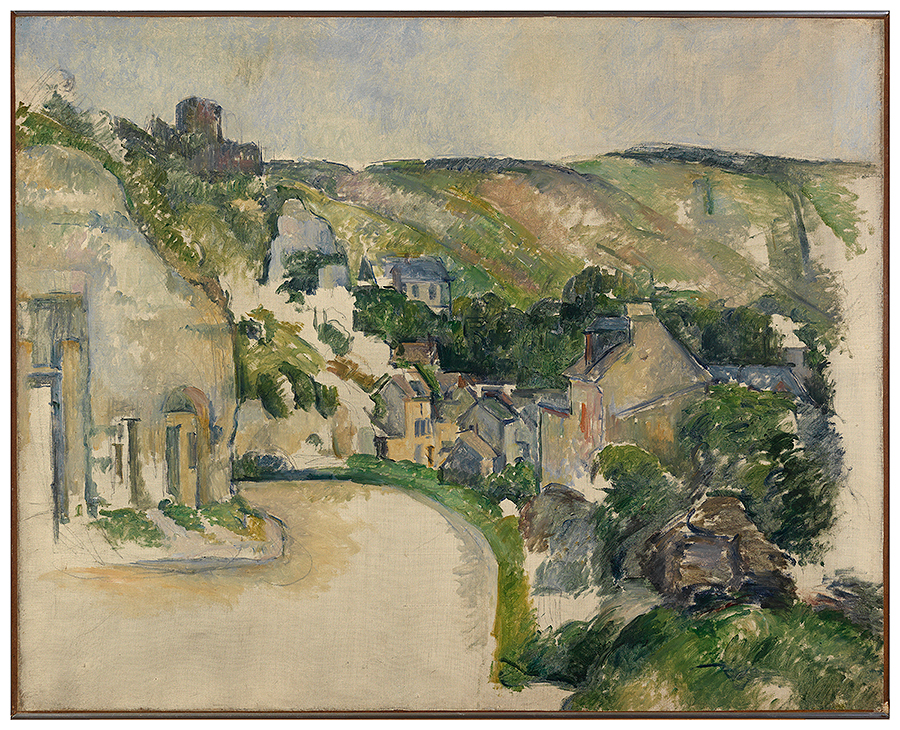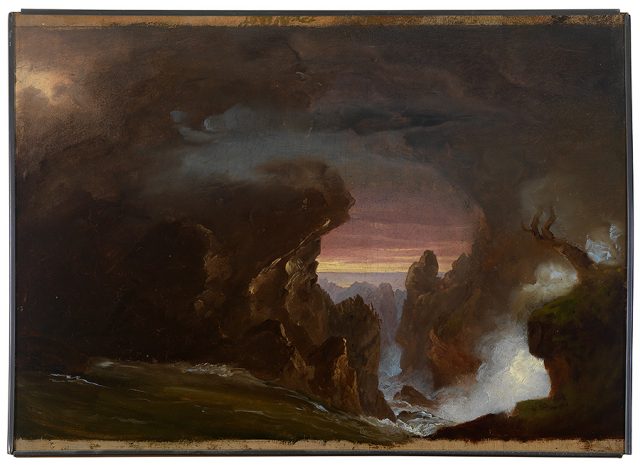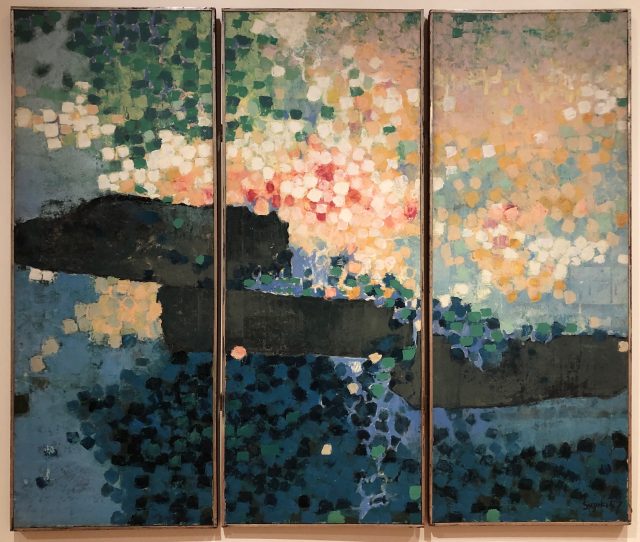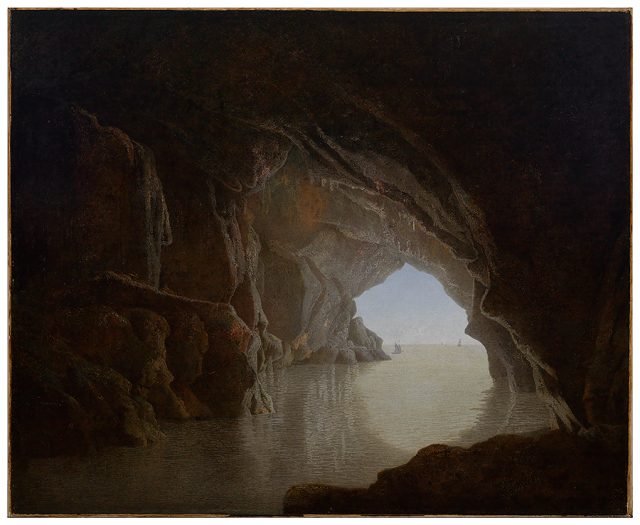Paul Cézanne: A Turn in the Road at la Roche-Guyon
ca. 1885, painting, oil on canvas
Cézanne spent much of his life working in his native Provence in the south of France, where he painted his well-known views of l’Estaque and Mont Saint-Victoire. He painted this landscape during the summer of 1885 while visiting Pierre-Auguste Renoir in La Roche-Guyon, a picturesque village along the Seine west of Paris. The dramatic geological features and architecture of La Roche-Guyon made it a popular site for artists during the late 19th and early 20th centuries. At left, Cézanne depicted the doors of underground dwellings carved into a chalk cliff and in the upper left, atop a distant hill, the village’s medieval castle. Because he never finished the painting, much of his preliminary drawing in graphite and large areas of primed canvas remain visible. The painting represents Cézanne’s early mature style, the period during the early 1880s when he moved away from the Impressionist teachings of Camille Pissarro and began to focus more on compositional structure, using short parallel brushstrokes to build up the forms. Before leaving La Roche-Guyon, Cézanne gave this painting to Renoir, an admirer and collector of his work.
WHAT AM I HEARING?
This soundscape features sounds of a rural village, with layers representing Cézanne and important biographical notes. Towards the beginning of the track, we can hear a woman’s voice speaking French; Cézanne identified his mother as foundational in his upbringing and important to the development of his personality. Also present is audio of a Spanish Catholic mass, as Cézanne was trained by a Spanish monk in his youth. We can also hear pencil scratches to note the unfinished nature of the painting and the label’s note of exposed graphite.



